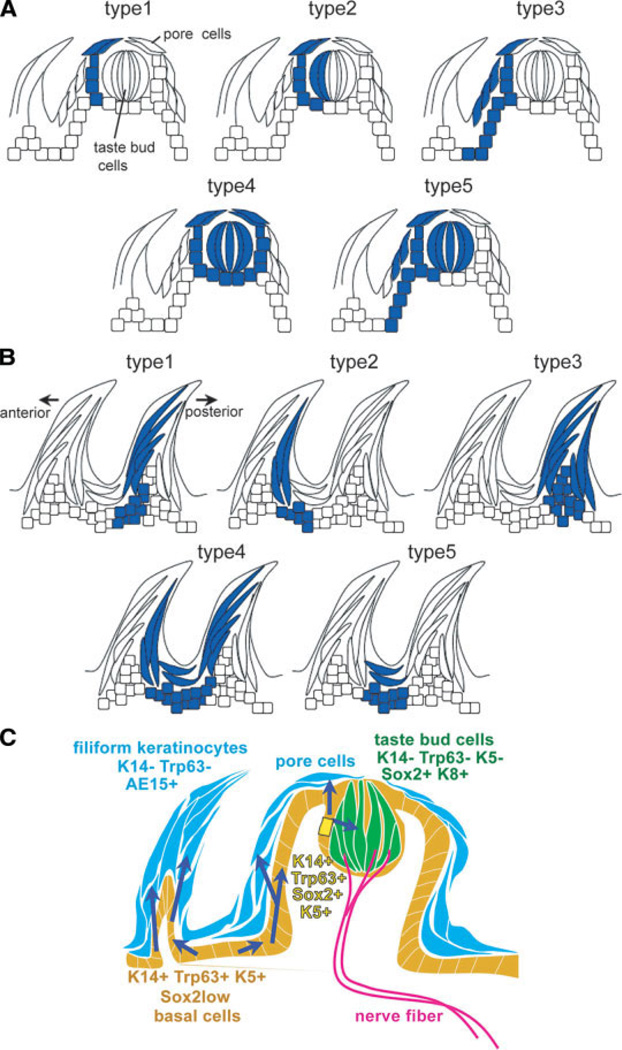Figure 6.
A possible model based on cell lineage analyses. (A, B): Schematic representation of typical LacZ lineage labeling patterns seen in the fungiform (A) and filiform (B) papillae. (A): Type 1 shows staining only in taste pore cells and adjacent epithelial cells. Type 2 shows staining in a subset of taste bud (TB) cells and adjacent pore and epithelial cells. Type 3 shows staining in both the basal cells of the fungiform papilla and the epithelial cells around the TBs. Type 4 involves labeling of TB cells and surrounding pore cells and adjacent epithelial cells. Type 5 is a combination of Type 3 and 4. (B): Different patterns of labeling seen within the filiform papillae. (C): A possible model based on genetic mapping of keratin 14 (K14)+ cells in the tongue epithelium. Adjacent to the TBs, K14+Trp63+Sox2+K5+ cells (yellow) are bipotential progenitor cells that can generate both TB receptor cells (green) and keratinized pore cells (blue). Daughter cells committed to the TB lineage upregulate Sox2 and K8 expression, and downregulate Trp63 and K14. On the other hand, daughter cells going towards the keratinocyte lineage lose both Sox2 and Trp63 expression. In the filiform and fungiform papillae, long-term progenitor cells (K14+Trp63+K5+Sox2Low) are located in the basal layer (orange) and move up and differentiate into K14−Trp63−AE15+ filiform keratinocytes (blue).

